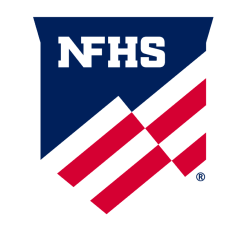The NFHS Voice

 The NFHS Voice
The NFHS Voice
Mitigation Efforts Must Intensify as Winter Sports, Performing Arts Begin
Dr. Karissa L. Niehoff, NFHS Executive Director
To play or not to play winter high school sports and other activity programs – that is the decision being considered by state high school associations, state health and education departments, and state governments.
While 35 states offered football this fall – with 30 leading to state championships – and another 10 states were able to sponsor other fall sports, the outlook for traditional winter sports and activities held indoors is proving to be one of the toughest decisions since the COVID-19 pandemic wiped out two-thirds of state basketball finals last spring.
According to the NFHS 2020-21 Basketball Seasons Modifications Map, 22 states have plans to conduct high school basketball in a fairly normal timeframe, while 29 (28 states plus the District of Columbia) have announced modifications for the season, many of which include delays to later in the year.
With the number of positive COVID-19 cases rising across the country, two of the core issues in making these winter sports decisions are determining how prevalent the transmission of the virus is in actual competition and the mitigation strategies necessary for indoor activities.
And to make these decisions even more difficult, while the physical health and safety of participants must remain the No. 1 criterion, there continues to be the social, emotional and mental health concerns if students are unable to participate in sports and performing arts. In short, these decisions are about the value of involvement in education-based activities vs. the concerns of no involvement in these life-changing programs.
The shift to indoor sports (basketball, wrestling, ice hockey, swimming and diving) this winter has elevated concerns about virus spread as participants will be in close proximity in enclosed settings. While there have been a few cases of large-scale virus spread reportedly traced to sport contact, we know from communication with state high school association leaders throughout the fall that, in fact, quarantines were more often enacted due to team members contracting the virus in other settings and bringing it into practices or games.
While at least one statewide survey seemed to support these reports from state associations that actual sport contact has not been the primary source of virus transmission, the NFHS Sports Medicine Advisory Committee is involved in gathering national data about the risk of COVID-19 spread from direct contact in sports competition this fall.
Regarding performing arts programs, the unprecedented aerosol study commissioned by the NFHS, the College Band Directors National Association and more than 125 other groups has demonstrated – through scientific research – that music activities can be successfully conducted by following several mitigation strategies.
In those schools with in-person learning, if participants playing wind instruments wear surgical-style masks with a slit for the mouthpiece, and use an appropriate bell cover, aerosol emission is reduced between 60 and 90 percent.
Mitigation strategies outlined in the first two releases of the aerosol study have helped to keep music programs going this fall in several states, and the third round of results released last week hopefully will enable more schools to feel confident in continuing music programs – in those schools where students are engaged in in-person learning – because the scientific data has become more refined.
As high school sports and other activities move indoors in the coming weeks, there are a number of mitigation efforts that schools must have in place if events are going to happen successfully.
In addition to the core protective elements of wearing masks, social distancing and proper hygiene, indoor activities will require the additional precautionary tasks of proper facility management and crowd management. Facilities must be properly sanitized, and ventilation systems must be in working order.
Crowds must be managed to accommodate the necessary distancing of spectators, and plans must be in place to keep fans from congregating, such as at halftime or following the game. One idea to enhance social distancing is to eliminate concession stands this year – or at least package items in a manner that improves the flow and lessens the chance of fan interaction.
Certainly, there are situations in some states where state health or government leaders are making decisions to return schools – and sports and activities – to virtual learning due to spiking positivity rates. And focusing on the physical health and safety of students, coaches, officials and spectators must come first.
However, in these cases, we encourage individuals to keep the faith and have plans in place when that next opportunity comes. High school sports have been a part of our nation’s schools for more than 100 years. They have survived world wars, natural disasters and countless funding challenges, and they will survive the COVID-19 pandemic.
Dr. Karissa L. Niehoff is in her seventh year as chief executive officer of the National Federation of State High School Associations (NFHS) in Indianapolis, Indiana. She is the first female to head the national leadership organization for high school athletics and performing arts activities and the sixth full-time executive director of the NFHS. She previously was executive director of the Connecticut Association of Schools-Connecticut Interscholastic Athletic Conference for seven years.









